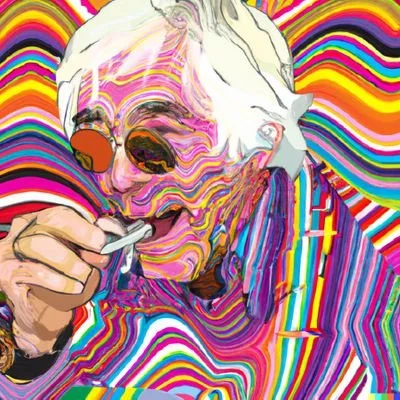You can’t describe qualia (at all, including color), but you can explain how different wavelengths are perceived by the eye and compare it to wavelengths of sound.
Qualia eh? I was calling them “sensations”. Thanks for the word.
I suppose you can’t describe any sensation/qualia. You can only refer to other sensations (in memory or with words or etc) and say “it’s like that”.
Different flavours for your eyes.
Color is maybe more like sound than it is like texture, pressure, temperature, or scent/taste; but it doesn’t usually have echoes or beats like sound does, and people who see can perceive lots of different colors at the same time on different objects in view.
One element of color is brightness. If you’ve felt sunlight and shadow on your skin, well, brightness is a lot like that. People who see use brightness and shadow to tell a lot about shapes of things, because things that are illuminated by light cast a shadow.
Another element of color is hue. If you’ve studied physics, you’ve encountered the idea of electromagnetic waves having frequencies, which is the same as photons carrying different amounts of energy. Hue is (mostly) just those frequencies, within the specific band that eyes can see. Paints and dyes affect which hues a surface reflects, because those chemicals resonate with those frequencies.
I wonder if a blind person could see color while under the influence of hallucinogens.
Here’s a “Blind people on LSD” thing. Haven’t actually read it.
https://www.livescience.com/62343-psychedelics-lsd-effects-blind-people.html
This is a FASCINATING topic. Anything relating to qualia, honestly, is. My understanding on a blind person seeing color under hallucinagens is, it’d depend on why they’re blind. If it’s something with the eye or optic nerve, then the brain, the thing that actually MAKES the color, should still be able to produce them, but if that area of the brain is damaged, then it’d be a lot less likely for them to see any color.
Also consider, if they do see color, but have never seen the world before, they won’t have any way to map color to object. So they may see a stop sign (or their interpretation of it, more like) and it may be in color, but essentially random. Now how do we know two people’s ‘red’ is the same color? All of this is absolutely fascinating to me.
One model of reality says that all sensations share a common root. If you could speak in terms of that root then maybe you could describe color to a blind man. You could probably describe a whole bunch of other strange things too.
There’s a book that helps describe colors to people who have never experienced color. It’s called The Black Book of Colors, and it incorporates a synesthesia-like experience to describe them.
You would have to understand the person. Some might think in math, others in musical notes, others in temperature, and others in taste. You would probably have to understand how they think in order to relate an unknown topic such as color.
In such a way that they understand what you are talking about like I would? Might not be possible.
Look up Mary’s Room for some more thinking into this subject.
there was a great scene in the movie Mask where the main character attempts this… using temperature i seem to recall
I saw that movie only one time as a kid and still remember that scene. Love it.
I’d compare them to musical notes I guess?
Loudness = brightness, color = note seems accurate enough to explain it.
You can’t really describe colors to someone blind from birth. They just have no reference or mechanical ability to be able to see it.
Someone below linked a Tommy Edison video (it’s a good watch, as is pretty much everything on his entire channel) where he talks about how people have tried to describe color to him all his life, but nothing they’ve said has ever actually made him see a color. He doesn’t see anything, he doesn’t have a working optic nerve.
Nice video. And nice dude and channel. I’d like him to do more videos. The last one is 2 years old.
Analogous to taste maybe
Different temperatures that tickle the eyes
That’s too limited. Go with different flavors
Do blind people ‘see’ things in their mind’s eye?
Like hearing multiple octals at the same time, when you’ve only ever heard one?
Like feeling cold and hot, when you’ve only ever felt uncomfort?
Like tasting sour and sweet, when you’ve only ever tasted bitter?
Like going to the country and smelling nature, when you’ve only ever smelt the smog of the city?
EDIT: no wait, that’s for someone who is partially blind, don’t think it works for someone who has never perceived sight.
I would start with “bright and dark”.
Many blind people already have an understanding of what it is. It is the basic concept of vision, after all, and they know more or less what they are missing.
Then the colors are just variants of bright and dark.
Not every bright is the same kind of bright. These different kinds of bright are called colors.








